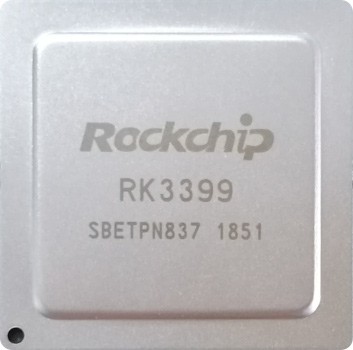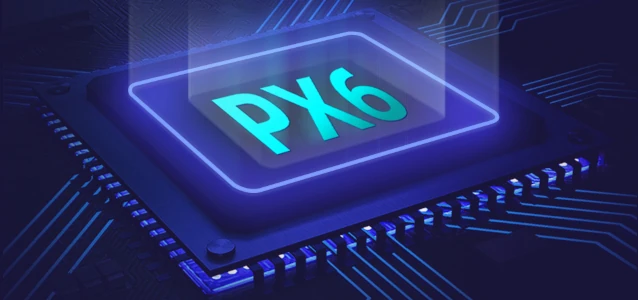Known as PX6 or RK3399
When searching for an android Headunit for your vehicle, you often encounter cryptic definitions, and ‘RK3399’ is just one of those.
RK3399 is listed as ‘Processor,’ and you will often see ‘PX6’ in the same description, but what is the difference, and why do they show both? Is one part of the other, or is one an upgrade? Do I need both to get a good Android headunit?
RK3399 is an SoC
SoC is a System on a chip – by Rockchip – hence the RK designation and why it is often called a processor. Advertising pitches often refer to it as a PX6 because it is easier to portray.
Cortex Cores
Rockchip has produced many SoC systems based on various Cortex cores. The RK3399 comprises two Cortex-A72 and four Cortex-A53 in big and LITTLE hexacore configurations. This is precisely the same as the PX6, and the PX6 is the RK3399 in another name. They are the same processors (Soc), but the PX6 sounds better in the advertising material when next to an octa-core PX5.
Everyone sees that ‘6’ is better than ‘5’.
When the sales team wants to write copy that gets the message across, you can’t beat adding +1 to show it is the next generation. We have all seen Android 10 being touted as better than Android 9, and the same sales pitch applies.
The RK3399 is the PX6; it is the same thing, just by a different name. If you are looking for an Android headunit, then a PX6 or RK3399 would be a good choice as the SoC Processor to power it.
PX6 in depth
The hexacore PX6 comprises a dual-core ARM Cortex-A72 MPCore processor and a Quad-core ARM Cortex-A53 MPCore processor. Both of these MPCores are high-performance, low-power, and cached application processors.
The PX6 configuration is by two CPU clusters. There is one ‘Big’ cluster with a dual-core Cortex-A72 optimized for high performance. The other CPU cluster is the ‘little’ cluster. With quad-core Cortex-A53, this little cluster is optimized for low power.
PX6 RK3399 has full implementation of the ARM architecture v8-A instruction set.
The PX6 frequency is clocked at just over 1.8GHz for the BIG cluster.
PX6 Block Diagram

NEON
Integrated within each PX6 CPU cluster is the ARM Neon co-processor (FPU). The neon has Advanced SIMD (single instruction, multiple data) support. This FPU benefits the Android headunit by accelerating media and signal processing, audio and video encoding and decoding, user interface processing, and 2D/3D graphics.
PX6 Graphics
The PX6 Graphics Processing Unit (GPU) provides a complete 2D and 3D graphics acceleration platform based on open standards.
The PX6 GPU supports the following graphics standards:
- OpenGL ES 3.0
- OpenGL ES 2.0
- OpenGL ES 1.1
- OpenCL 1.2
- OpenCL 1.1
- OpenCL 1.0
- DirectX 11.1
- DirectX 9
The PX6 GPU consists of:
- 4 Shader Cores
- 1 256KB Level2 Cache Memory Subsystem
- 1 Memory Management Unit
- 1 Job Manager
- 1 Hierarchical Tiler
- 1 Core Group
PX6 RAM
PX6 (RK3366) is compatible with DDR3-1866 /DDR3L-1866 /LPDDR3-1866 /LPDDR4 SDRAM. This is an improvement over the PX5 processor and in line with the normal memory speed timing improvements over time. The faster ARM cores need faster RAM to keep the work processing work flowing, so faster RAM can be used.
USB
We see support for USB 3.0 in the later processors like the PX6. Expect Android headunits to support USB3 and USB3OTG as these following-generation processors become more widely used.
Overall PX6
The PX6 processor for an Android head unit is a breath of fresh air. There is no need to re-purpose the phone chips to run an Android headunit, and they are getting dedicated processing power. The hexacorePX6 is seen as the successor to the quad-core powered PX5. Many PX5 Android headunits have been upgraded to PX6 power and speed. This took very little work to make the upgrade for manufacturers, and as soon as the PX5 units stocks were dry, identical-looking PX6 units stepped in.
The new PX6 processor also accelerated the popularity of the quick-to-boot and fun-to-use single DIN with a 10.1″ screen Android head unit. This prevalent format is a winner for many Android headunit users due to its large screen, universal single DIN fitting, and super quick processor.
PX6 Overtaken
The processing speed of the PX6 used in Android head units has been overtaken by the UIS7862 chip, but the PX6 still stays a firm favorite with the buyers as the UIS7862 foothold needs to expand.










Hello, I am reaching a firmware update for my Android 9 10.1″ RK3399 4/64GB China single DIN Head unit…. I came across this site and am hoping I came to the right place. Appreciate any help, thanks…